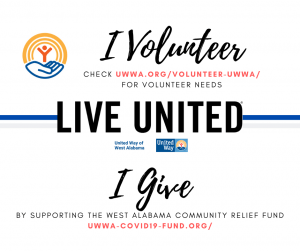A Look at Nonprofit Response to Covid-19
Published on September 16, 2020, at 6:45 p.m.
by Tralene Hunston.
2020 has been a tumultuous year, throwing curveballs into even the best laid plans. With the enduring difficulties of the COVID-19 pandemic that businesses now face, many organizations are scrambling to find ways to remain viable. Nonprofits are also facing growing concerns that are uniquely enhanced by their funding structures.
These hardships highlight the need for public relations practitioners to respond quickly to advance reliable information and drive favorable impressions, particularly in the nonprofit realm. In fact, an article from LaPiana Consulting recommends a strategic communications plan as necessary for nonprofit organizations to adapt and overcome, since 90% of nonprofits are already facing revenue losses.
Nonprofits are responsible for assisting and helping to create equity in communities worldwide. With the looming threat of a potential economic crisis, paired with concerns over federal funding tied to the 2020 Census, it is important that nonprofits are communicating effectively and with transparency to their donors and beneficiaries. Here are four public relations practices recommended by nonprofits who are successfully surviving 2020.

Managing communication
Managing communication during a time of crisis is necessary for organizations to operate efficiently. The subsequent social distancing that COVID-19 rendered upon organizations increased communication challenges, as organizations sought to communicate virtually across a variety of channels. Nonprofits with subsidiaries were forced to overcome these issues, resulting from channel inconsistencies across a range of partnered nonprofits.
“It was challenging to keep people updated amid so many platforms and channels,” Julie Mann, vice president of communications at United Way of West Alabama, said. “The best tip I can recommend is for PR practitioners to be flexible, to be adaptable and to not be stringent.”
Mann pointed out that during a crisis, public relations practitioners can help their organizations by instilling efforts to manage communication and underscore the importance of making it easier for others to provide their information to you. Mitigating some of the panic over a variety of channels, from a variety of voices, by easing the intake of communication is an effective — and empathetic — way to alleviate concerns.
Branding
A well-rounded understanding of your brand and purpose can help your organization shift roles. Organizations that are predominantly offering participants outdoor recreation activities, for example, may seem to be at a significant disadvantage with the long-term social distancing requirements of COVID-19, but understanding your brand can overcome this challenge.

Understanding its brand and purpose allowed Project Healing Waters Fly Fishing Inc. (PHWFF) to quickly pivot to a virtual “safe-space” in early March 2020 in response to the COVID-19 pandemic, according to Todd Desgrosseilliers, president & CEO. PHWFF offers recreational therapy to disabled veterans through the unique fly fishing programs it offers nationwide. The programs provide five core program activities in both indoor and outdoor settings. This virtual shift was essential to manage the risk of COVID-19 exposure to the organization’s volunteers and the disabled veterans who are its participants; allowed participants to stay engaged in an isolating time; and ensured they were able to have access to core programming and services.
“Having the ability to be able to operate in a virtual environment is absolutely essential to any nonprofit,” Desgrosseilliers said. “The framework for that should be built with branding in mind; the marketing and branding need to be there.”
Leveraging COVID
Since March, pressing concerns over hiring have been presented to organizations at increasing rates. In many industries, hiring stopped and employees were let go, furloughed or forced to take on pay cuts. “Essential workers,” “working from home” and “the unemployment rate” (currently standing at 8.4%) are now commonplace terminology. It goes without saying that nonprofits that are positioned in assisting participants to find meaningful employment may be struggling to deal with these changes.

Some nonprofits have found ways to overcome this struggle and have been able to benefit from the situation: They have done so by leveraging the COVID-19 crisis. Finding ways to leverage the conditions that COVID-19 presents in a favorable light is a way that nonprofits can bear this burden.
“We have been using COVID as a spotlight for our particular nonprofit message,” Dennis Hayashi, Special Operators Transition Foundation, corporate engagements, said. “Our positioning strategy focuses on the fact that our candidates have worked in surge-like conditions, are adapted for successfully working in uncertainty, are able to swiftly assess scenarios, differentiating from the usual customary practices, and COVID has shown us that corporations have a need for those skill sets. We can emphasize the strong skill sets of our candidates, who happen to be uniquely prepared to handle the organizations’ concerns that COVID presented.”
Transparent communication
The actions nonprofits take in 2020 will undoubtedly shape the future and viability of their organizations. With the inability to use typical fundraising platforms (e.g., in-person gala or mixer), nonprofits need to shift and adjust their communication plans to best assist those in need and maintain the flow of communication to donors.
Desgrosseilliers, Hayashi and Mann each specified that continued and transparent communication is a necessary facet to keep their donors engaged and encouraged to stay on board with their missions.
Keeping communication transparent allows for nonprofits to encourage the longevity of donor engagement, ultimately enhancing the opportunity for nonprofits to remain in good financial standing with the ability to assist their participants.




